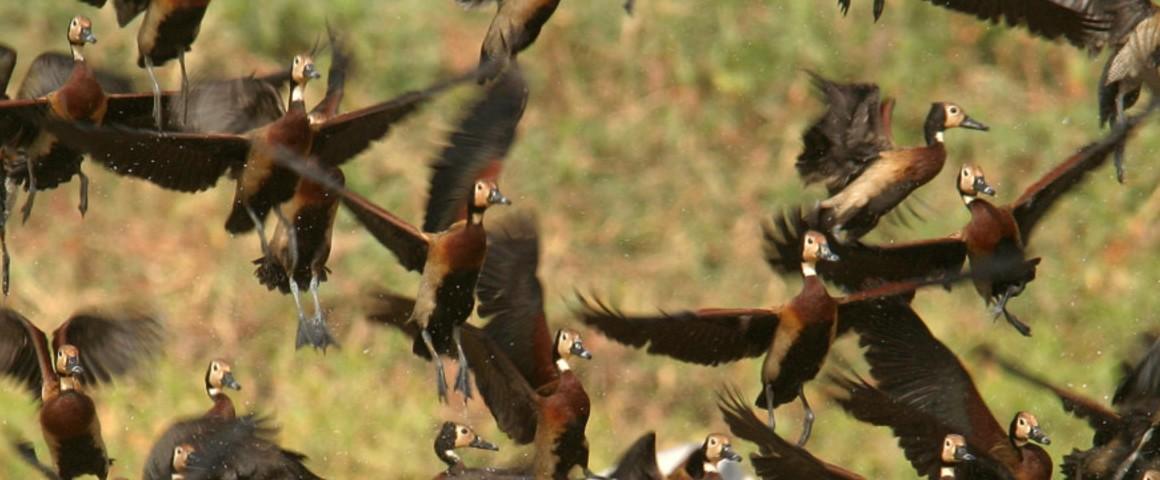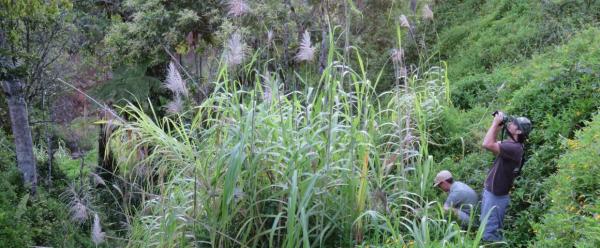Just out 27 October 2025
- Home
- Press area
- Press releases
- Preventing the risk of an avian influenza epidemic
Using the One Health approach to prevent the risk of an avian influenza epidemic

Wild birds (here, white-faced whistling ducks on the Niger River) can be a source of diseases that can spread to poultry flocks and then to farmers, such as avian influenza © D. Cornelis, CIRAD
France saw an unprecedented avian influenza epidemic in 2021-2022, leading to the preventive culling of 21 million poultry birds at a cost of a billion euros. According to Véronique Loyer, civil society representative on the COVARS committee, poultry farmers are really suffering as a result.
"Several cases of direct contamination between infected birds and mammals were seen in France, and in Spain in late 2022, at a mink farm", said CIRAD veterinarian Thierry Lefrançois, co-lead of the statement, at a media briefing organized by the COVARS on 12 June*. In view of the situation, the EU has authorized poultry vaccinations, which will concern ducks in France as of October. "Vaccination is an additional tool to back up biosecurity measures" such as disinfecting installations, contaminated tools, etc.
The COVARS repeated the recommendation made by the Haute Autorité de Santé (HAS) that farmers and people in contact with domestic and wild birds should be vaccinated against seasonal flu, due to the risks of the disease being transmitted to humans, and of possible virus recombinations. The COVARS is reassuring in that respect, saying that the risk of virus reassortment is limited and that "there have not been any confirmed cases of contamination between humans", to quote Thierry Lefrançois.
The COVARS is calling for increased surveillance of birds, involving those people most in contact with them: farmers, abattoir workers, hunters, ornithologists, field staff from various organizations, etc.
The H5N1 virus that causes the disease is circulating among a large number of migrating species, whose migratory routes have been significantly impacted by climate change. "Migratory birds are staying longer in temperate zones and venturing further north", says eco-epidemiologist Patrick Giraudoux. "The virus has become endemic within French avian fauna over the past two years", Bruno Lina, a virologist who co-led the statement, adds.
Since the H5N1 virus is circulating not just in Europe but also in South and North America, the members of the COVARS reiterate the importance of working on it on both a European and international level. "We need to work together on several aspects of surveillance: on farms, at domestic fowl/wildfowl interfaces and in humans, taking a One Health approach", Thierry Lefrançois points out.
* The following people contributed on 12 June:
- Brigitte Autran, President of COVARS, immunologist
- Thierry Lefrançois, co-lead of the statement, veterinarian
- Patrick Giraudoux, eco-epidemiologist
- Bruno Lina, co-lead of the statement, virologist
- Denis Malvy, infectiologist
- Véronique Loyer, civil society representative



























